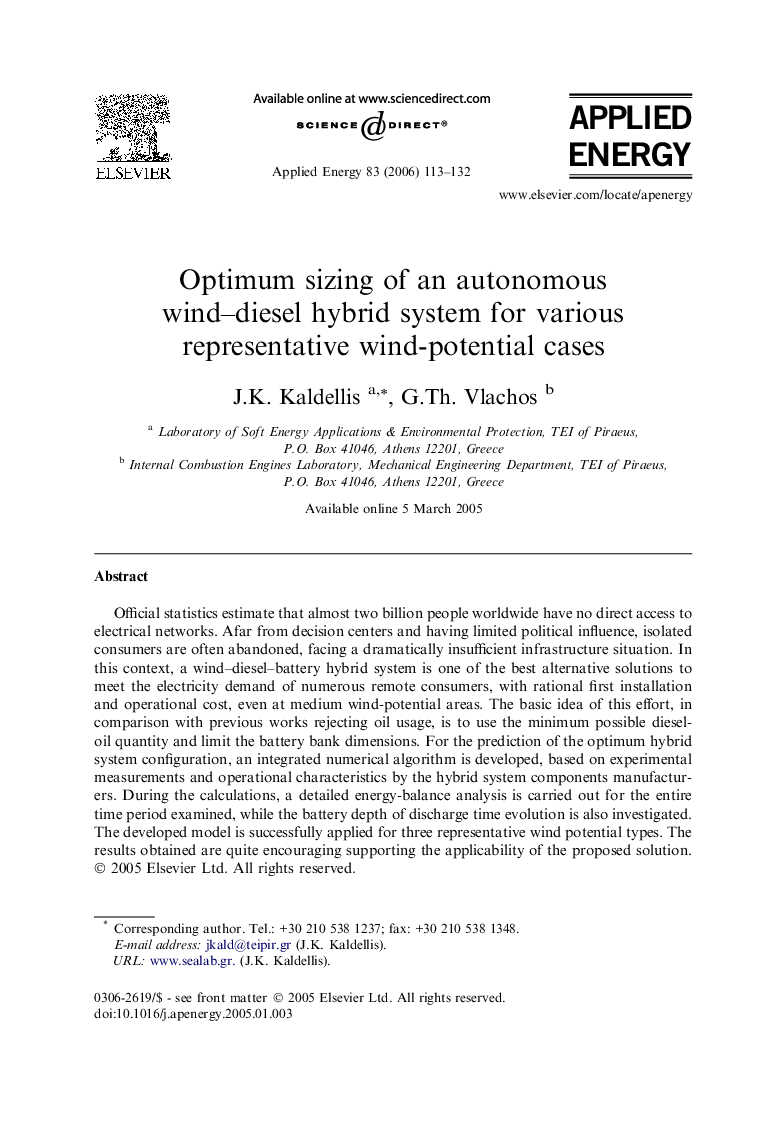| Article ID | Journal | Published Year | Pages | File Type |
|---|---|---|---|---|
| 245454 | Applied Energy | 2006 | 20 Pages |
Official statistics estimate that almost two billion people worldwide have no direct access to electrical networks. Afar from decision centers and having limited political influence, isolated consumers are often abandoned, facing a dramatically insufficient infrastructure situation. In this context, a wind–diesel–battery hybrid system is one of the best alternative solutions to meet the electricity demand of numerous remote consumers, with rational first installation and operational cost, even at medium wind-potential areas. The basic idea of this effort, in comparison with previous works rejecting oil usage, is to use the minimum possible diesel-oil quantity and limit the battery bank dimensions. For the prediction of the optimum hybrid system configuration, an integrated numerical algorithm is developed, based on experimental measurements and operational characteristics by the hybrid system components manufacturers. During the calculations, a detailed energy-balance analysis is carried out for the entire time period examined, while the battery depth of discharge time evolution is also investigated. The developed model is successfully applied for three representative wind potential types. The results obtained are quite encouraging supporting the applicability of the proposed solution.
